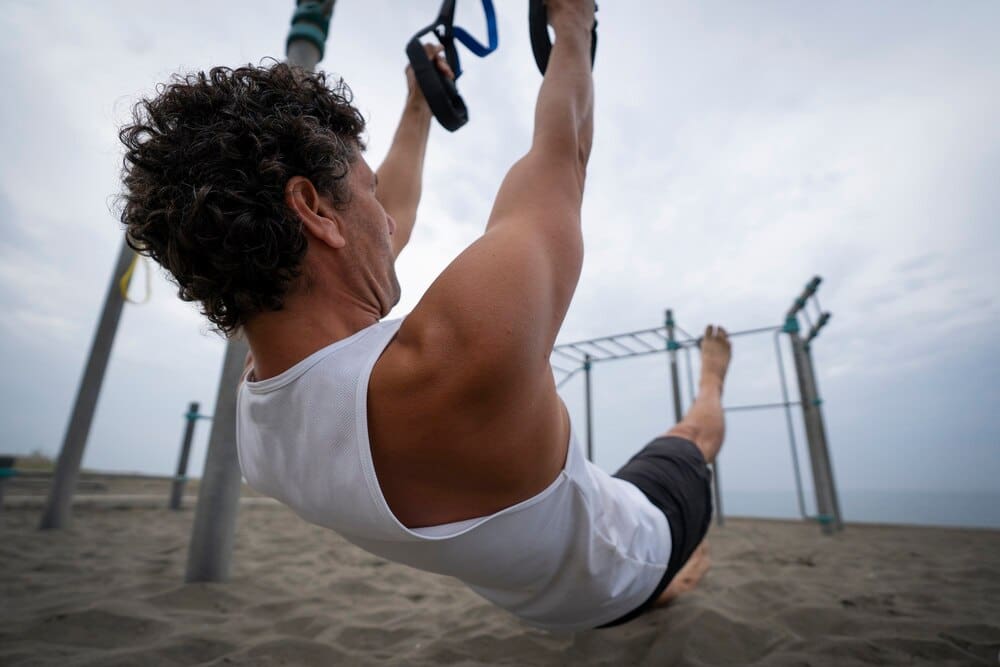The kettlebell swing is a foundational exercise for anyone, from fitness beginners to seasoned athletes in active cities like Miami, looking to build explosive power, incinerate calories, and forge a resilient physique. What defines this movement is the powerful hip hinge, a fundamental pattern that generates force from the glutes and hamstrings to propel the kettlebell forward. When performed correctly, the swing strengthens the entire posterior chain—the network of muscles on the backside of your body—and serves as a high-intensity cardiovascular workout. However, the reason it demands such careful instruction is that improper form, particularly rounding the lower back or using the arms to lift the weight, transforms a potent back-strengthening exercise into a high-risk maneuver for spinal injury. Understanding that the swing is a ballistic hinge, not a squat or a front raise, is the single most critical element for harnessing its benefits safely and effectively.
What is a Kettlebell Swing, Really?
At its core, the kettlebell swing is not a strength lift in the traditional sense. It’s an expression of power. Unlike a squat or a deadlift where you control the weight through a slow, deliberate range of motion, the swing is ballistic and explosive.
The primary goal is to master the hip hinge. Imagine pushing your hips straight back as if trying to close a car door with your rear, all while keeping your back perfectly flat. This movement loads the powerful muscles of your glutes and hamstrings, turning them into a loaded spring. The “swing” itself happens when you explosively snap your hips forward, transferring that stored energy into the kettlebell and causing it to float up to chest level.
Your arms, in this scenario, are merely ropes connecting you to the weight. They do not pull or lift; they simply guide the kettlebell along its intended arc. The muscles that truly do the work are the glutes, hamstrings, and your core, which must remain braced and stable throughout. The lats, the large muscles of your upper back, also engage to keep the bell close to your body and protect your shoulders.
The Anatomy of a Perfect Swing: A Step-by-Step Guide
Mastering the kettlebell swing is a process of refining a sequence of movements until they become a single, fluid motion. Breaking it down into distinct phases can help you build the proper motor pattern from the ground up.
The Setup
Your starting position sets the stage for a safe and powerful swing. Stand with your feet positioned slightly wider than your shoulders, with your toes pointing forward or slightly out. Place the kettlebell on the floor about a foot in front of you, so you have to reach for it.
Hinge at your hips, pushing them back while keeping your back flat. Your shins should be relatively vertical. Grip the kettlebell handle, or “horn,” with both hands using an overhand grip. Tilt the kettlebell back towards you. This is your starting point.
The Hike
The first movement is the “hike pass.” Think of a center in American football snapping the ball. Pull the kettlebell back sharply between your legs, aiming high up toward your groin. This action loads your hips and hamstrings and initiates the pendulum motion of the swing. A common mistake is starting the swing from a dead-stop on the floor, which often leads to using the lower back.
The “Snap” and Float
As the kettlebell reaches its furthest point behind you, it’s time to explode. Drive through your heels and violently snap your hips forward. This hip extension should be so forceful that you squeeze your glutes and quads at the top, finishing in a tall, straight standing plank position.
This explosive hip snap is what propels the kettlebell upward. The bell should feel almost weightless as it floats up to about chest height. Your arms remain straight but relaxed. If you feel your shoulders or biceps working hard, you are lifting the bell, not swinging it.
The Downswing
Let gravity do the work on the way down. Do not actively pull the kettlebell down. As it descends, wait until your forearms reconnect with your upper thighs before you begin to hinge at the hips again. Hinging too early will cause you to stoop over, putting stress on your spine.
Absorb the force of the descending bell by loading your hips and hamstrings, guiding it back into the next hike pass. Each repetition should flow seamlessly into the next, creating a consistent and powerful rhythm.
Common Mistakes and How to Fix Them (Protecting Your Back)
The difference between a back-builder and a back-breaker lies in the details. Here are the most common errors that put your spine at risk and how to correct them.
The Squat-Swing
The Mistake: Bending the knees too much and dropping the hips down, essentially performing a squat. This negates the purpose of the hip hinge and fails to properly load the glutes and hamstrings.
The Fix: Focus on pushing your hips back, not down. A great drill is to stand about a foot away from a wall, facing away from it. Practice your hinge without weight, aiming to touch the wall with your glutes. This forces you to initiate the movement from your hips, keeping your shins more vertical.
The Front Raise (Using Your Arms)
The Mistake: Actively lifting the kettlebell with the shoulders and arms. This is a sign that the weight is too light or that you haven’t learned to generate power from your hips. It fatigues your shoulders and offers none of the swing’s posterior chain benefits.
The Fix: Think of your arms as relaxed ropes. The kettlebell should feel like it’s floating at the top of the swing. If you’re unsure, try swinging with a slightly heavier bell. A heavier weight often forces you to use your hips correctly because your arms simply aren’t strong enough to lift it.
The Back Arch (Hyperextension)
The Mistake: Leaning back and over-arching the lower back at the top of the swing. This compresses the lumbar spine and can lead to significant pain and injury over time.
The Fix: At the top of the swing, your body should form a rigid, vertical plank. Actively brace your abs as if you’re about to take a punch and squeeze your glutes hard. This creates posterior pelvic tilt, locking your pelvis and lower back into a safe, neutral position. Your finish should be tall and powerful, not leaned back.
The Rounded Back (Lumbar Flexion)
The Mistake: This is the most dangerous error. It involves rounding the lower back at the bottom of the swing, during the hinge. This places enormous shear force on your lumbar discs.
The Fix: Keep your chest up and your gaze neutral—not up at the ceiling or down at your feet, but toward the point where the wall meets the floor in front of you. Before you even hike the bell, engage your lats by imagining you are trying to break the handle in half. This action “packs” your shoulders and helps lock your spine into a safe, neutral position.
Choosing the Right Kettlebell
Selecting the correct starting weight is crucial. A common error is starting too light. A kettlebell that is too light encourages bad habits, like muscling the weight up with your arms. A heavier bell forces you to learn to use the power of the hip hinge.
For women, a good starting weight is typically between 8 kg (18 lbs) and 12 kg (26 lbs). For men, a starting weight between 16 kg (35 lbs) and 20 kg (44 lbs) is generally appropriate. These are just guidelines; your current fitness level will dictate the best starting point. The priority is always perfect form over heavier weight.
Integrating Kettlebell Swings into Your Miami Lifestyle
In a vibrant, fast-paced city like Miami, efficiency is key. The kettlebell swing is an incredibly time-efficient exercise, offering both strength and conditioning benefits in a single workout. A quick 15-minute session of swings can be more effective than a much longer period of traditional cardio.
This exercise is perfect for building the strong, athletic physique desired for an active, outdoor lifestyle. The power and core stability developed through swings directly translate to better performance in activities popular along the Miami coast, like beach volleyball, running on the sand, or paddleboarding. It builds a resilient lower back and powerful hips, protecting you during dynamic movements and helping you build a body that’s not just aesthetically pleasing, but functionally robust.
In conclusion, the kettlebell swing is a powerhouse exercise with profound benefits for your strength, conditioning, and posture. Its value, however, is entirely dependent on technique. By focusing on the hip hinge, generating power from your glutes, and keeping your spine neutral, you can safely unlock its potential. Treat the swing with respect, master its form, and it will become one of the most effective tools in your arsenal for building a strong, capable, and injury-proof body.







